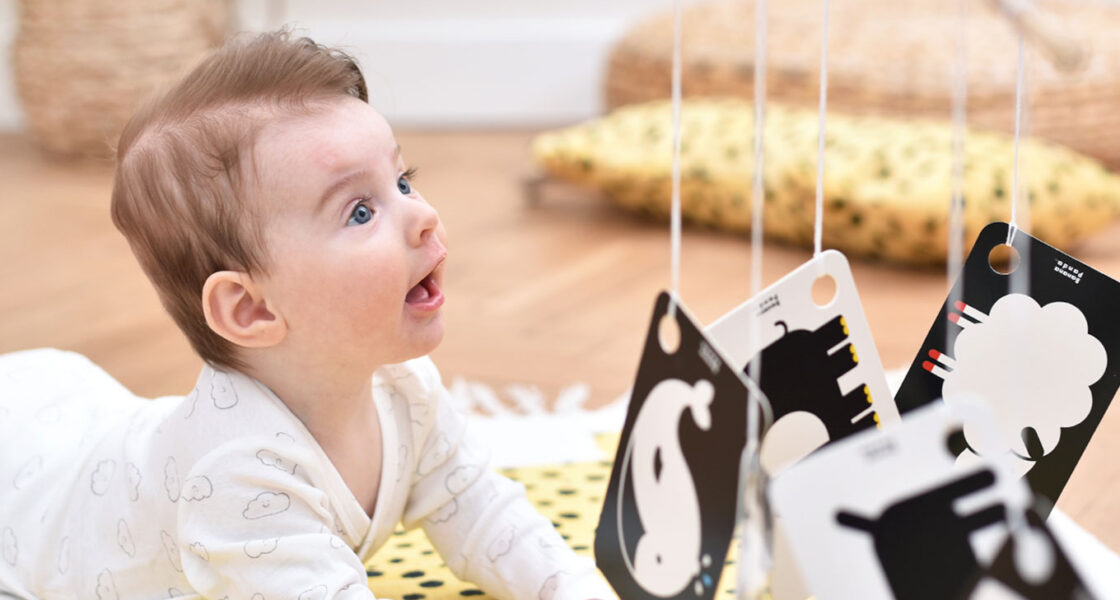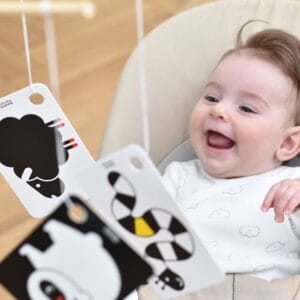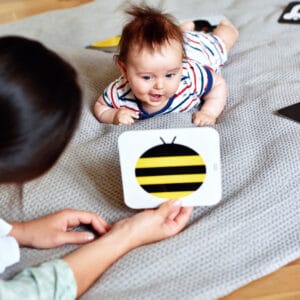The importance of playtime with your newborn baby
Do you know how an infant sees?
An infant perceives the world as if through steamed glass and in shades of grey because the only colors they can see are black and white.
An infant’s field of vision is much narrower than that of an adult, much like a keyhole. This protects the child’s brain from overstimulation.
The muscles of the eye are still very weak, so visual focus is best 20-25 cm from the base of the nose – this is the average distance from a mother’s face when she holds her infant.
An infant internalises shapes and colors gradually, in accordance with their visual development; after black and white, they begin to recognize yellow and red.
White, red and yellow draw an infant’s attention; focusing on these colors stimulates the nervous system.
It’s never too early to explore the world together!
- An infant is born with about 200 billion neural cells. While this number decreases by half over a person’s lifetime, the connections between these neural cells multiply.
- The most important connections in the human brain are created in the very early stages of life, so the proper stimulation can support the development of an infant’s nervous system soon after birth.
- The process of cell linking can be intensified by providing appropriate sensory stimuli for the baby, including visual stimuli, so focusing on contrasting images has a positive impact on the developing brain.
- Perception training is one of the basic stages in shaping intelligence and communication skills. It also significantly influences kinetic development.
Playing with flash cards engages a child’s perception, and help develop all of these faculties.
What are Banana Panda Contrast Cards?
High Contrast Cards were created for parents who want to support their baby’s natural development.
Large contrasting illustrations, adjusted to the visual perception of young infants, aid in the development of visual-spatial intelligence and recognition of object borders, which eventually facilitates grasping and mobility.
Play between parent and child builds a closer bond, helps baby to learn about the world around them, and prepares them to learn speech.
How to use Contrast Flash Cards:
- Move the cards in front of your baby’s eyes from up to down, right to left, closer and further away. The movement should be slow and smooth, allowing the baby to practice visual tracking, as well as develop concentration and focus and strengthen eye muscles.
- Show the cards to the baby from a short distance, ideally 25 cm/ 10 inches.
- Hang ring flash cards next to baby’s bed or stroller, or on a mobile to the left or right of the infant rather than directly overhead.
- Talk to baby about the pictures or make up a short story using the cards as illustrations; talking to baby fosters the bond between you.
There are endless possibilities for play – let your imagination lead the way. Remember to adapt play to your baby’s daily rhythm – he or she should be rested and fed and have a clean diaper.

















